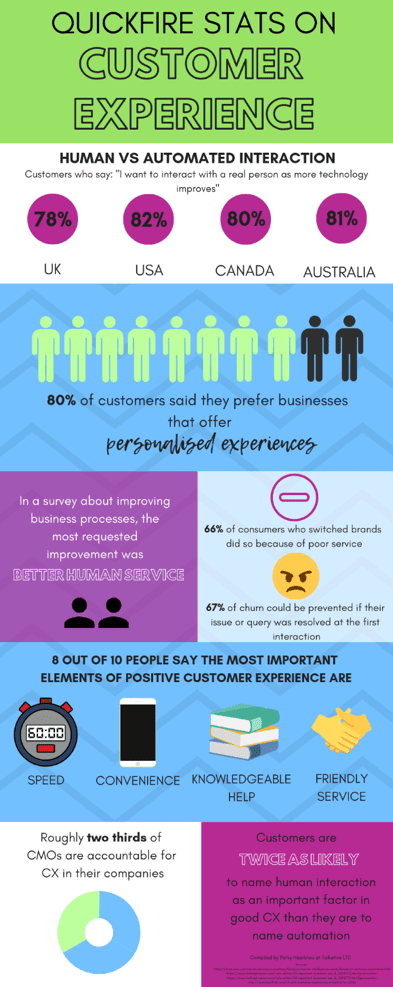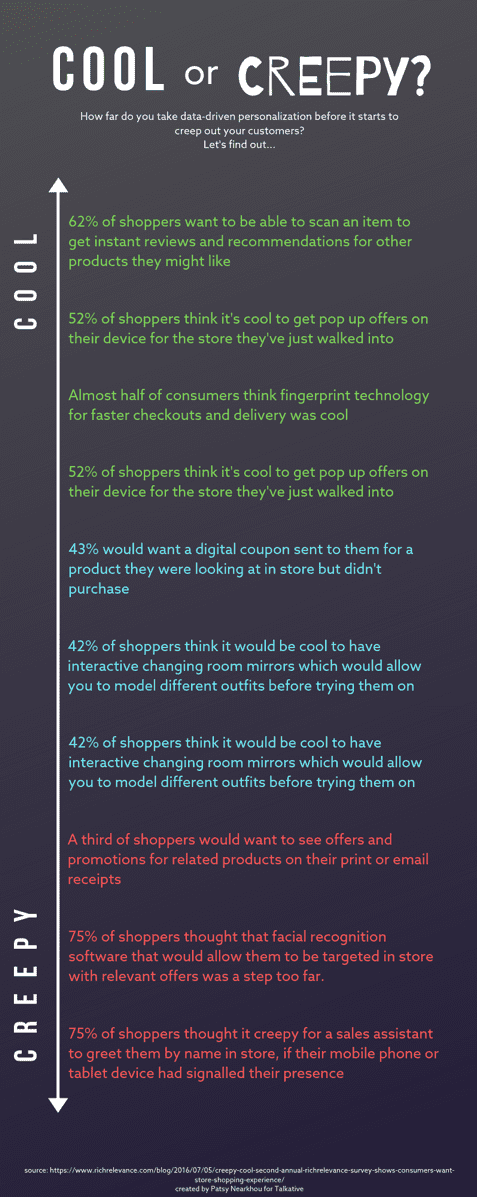The many ways technology has transformed our lives can be seen clearly in the ways we live, work, shop and communicate
Customers today are more likely to use online channels to complete their journeys than ever before. Gone are the days when customers were anxious about ordering online. Nowadays, many people are just as confident and trusting of websites as they are of heading into a physical store.
This isn’t just for impulsive, cheap purchases like fast fashion or consumer goods either. As online channels continue to become normalized, customers are also increasingly heading online to shop for higher ticket items too, such as cars and high-end electronics.
Download our Individual Member Resource – Website and e-commerce personalization guide
This guide is aimed at marketing managers involved with making the business case for personalization, looking to plan a personalization implementation or extend their use of personalization.
Access the
The many ways technology has transformed our lives can be seen clearly in the ways we live, work, shop and communicate. It’s become so deeply entwined with everyday life that it’s difficult to imagine going a day without technology.
With this in mind, it’s understandable that a lot of companies are now choosing to automate many of their processes, communications and marketing strategies. It falls in line with the modern consumers’ desire for all things digital, so it’s the next logical step towards improving customer experience, right?
Well, not exactly.
It’s true that digitalized processes are convenient and are generally well-received today, but automation simply cannot provide the attention to detail and the human-touch that customers still want.
A global study by PWC has found that as technology advances, the vast majority of people want technology to be used as a method for increasing personalized support. In short, customers want more human interaction, not less.

But let’s also be realistic. It’s impossible to run a big company, or any company for that matter, without having some processes automated. In fact, customers now expect certain processes to be automated. For example, I’d hazard a guess that most customers expect order confirmation emails to be automated. After all, if the technology exists to make more processes more efficient, why not make the most of it?
How do you strike the balance?
Like anything, automation and personalization only work effectively when they are well-balanced. Too much automation and your company seems inhuman, detached, and the customer lacks interest in your campaigns as they aren’t tailored to their needs. On the other hand, too much personalization can feel intrusive, overwhelming and just plain creepy.
To find out how to balance automation and personalization, let’s delve into three key parts of the customer journey, and why getting it right is so important to the ongoing relationship between a brand and its customers.
Surprise and delight
A key benefit of automation is that it allows companies to deduce information about their customers and use the information to provide a better quality service. By knowing the preferences of customers on paper, companies can be more precise in their targeted marketing campaigns, which is something most modern consumers have now come to expect.
The problem is that humans don’t exist on paper; they’re real, three dimensional and, at times, contradictory. People want different things at different times, but consumers’ expectations for a great service remains incredibly high.
This means that in order to surprise and delight customers, the method must be tailored to their specific needs and delivered in a way that makes the customer feel special.
Automation can help businesses gather information about their customers quickly and effectively to help achieve this (provided they don’t take it too far- more on that later). The key thing to remember is that technology should be used to facilitate a better customer experience, not rip out human interaction entirely. Here’s a great example of how a restaurant surprised and delighted its most regular customers.
Use automation to bring people together
The owner of the restaurant recognized a regular customer through beacon on an app as they walked through the front door. The owner could see from the customer’s previous order history that they always order the same starter, so without being prompted, the owner sends the waitress over to their table with their favourite starter on the house. The customer was thrilled and although the delivery of the surprise was highly personalized, it was made possible through an automated notification on a restaurant system.
In this instance, it would be impossible even for a human to get it right 100% of the time, but thanks to clever data collection and automation, the restaurant owner could be sure that the gift would be well received by the customer. It ensured that they were made to feel appreciated and valued.
Another great example of how a company used personalized messaging to surprise and delight customers is Sainsbury’s.
Sainsbury’s is a UK-based supermarket chain, which is known for its forward-thinking approach to technology. It was the first European retailer to introduce self-service machines in all of its stores and it has recently opened the first ever no-till store.
The team at Sainsbury’s went one step further in 2018 with their ‘The Time It’s Ultra Personalized!’ campaign. By using smartphone location data, they were able to offer customers personalized offers and promotions through their phones as they were walking around the store. Not only did it help to promote in-store offers, but it also provided valuable insight into the way customers navigate the stores. This helps Sainsbury's to make better merchandising decisions and improve its in-store customer experience.
Handling customer queries
Personalization doesn’t always refer to fancy algorithms or targeted ads. In many cases, the most effective form of personalization goes back to basics: having a real conversation with another human being.
In an effort to streamline customer services processes and reduce contact centre wait times, many companies are increasingly leaning towards automation. The most obvious example of this can be seen with the rise of chatbots, but other forms of AI such as IVR (Interactive Voice Response) are also being used to communicate with customers directly.
This isn’t such a bad thing when it’s being used properly. After all, big companies have a huge volume of customer cases they need to manage on a daily basis, so it makes sense to have a system in place that can sort through the queries and send them over to the correct department.
But here’s the problem: whilst people nowadays expect high efficiency and speed, they also expect a high-quality customer experience. Automation works well for triaging queries, but it simply isn’t robust enough yet to handle a complex conversation, which means that this can cause more harm than good for the customer.
Ultimately, if a customer is trying to resolve an issue with a company and the assigned help is an automated bot that can’t understand them or help them properly, this will just infuriate the customer and increase case resolution times.
Truly personalized support can only come from humans
Automated solutions like chatbots can work well for responding to simple queries and FAQs. In fact, this can be an optimal setup, as it alleviates resources from the customer service team who can, therefore, spend more time talking with customers and managing more complex enquiries.
But there are also more nuanced ways to balance the two. Incorporating a live chat feature on your website can enable human communication between agents and customers, meaning the customer receives high-quality answers to their questions quickly.
It also means that customers can engage in more meaningful conversations with agents as they journey through a website together. The support is personal and tailored, but technology makes the whole experience more efficient for both the company and the customer.
Remember, people usually contact customer services for one of two reasons: they have a problem that needs fixing, or they need more information about something. Customers want to feel supported in both of these scenarios, and the best way of ensuring that is by making it as easy as possible for them to have a real conversation with another person.
News updates and promotions
There are times when personalization is neither necessary nor efficient, such as when sending out important company news updates to customers, offers or promotions. It’s impossible for any company to individually send every customer an email containing a personalized coupon, for example.
Similarly, it’s not the most effective strategy to send everyone on the mailing list the exact same promotion or offers, as customers’ interests vary greatly depending on the products they’re looking to purchase.
Of course, some could argue that sending over offers or promotions to customers should always be personalized to some extent as it encourages customers to buy, and there’s some truth in that.
For example, if I was shopping for a summer dress, it makes sense that the clothing company I was browsing on would send me a discount code for 30% off summer dresses because they know from their website history that this is highly relevant to me. In fact, I daresay I’ve received many emails like this… and many have worked.
But there’s a line.
Hyper-personalized marketing tactics can sometimes go too far, making customers feel more creeped out than impressed. Problems with personalization can arise when brands don’t pay enough attention to the people they’re targeting and how their targets might make the customer feel.
A particularly creepy example of this is the man in assisted living who was sent a personalized Christmas hamper from the local mortuary. Not exactly the best Christmas present, I think we can all agree.
Another example of this is the infamous Target story, where a distressed father angrily called up his local Target store after they had sent his teenaged daughter pregnancy-related goods coupons. Turns out, their prediction was completely correct.

Customers are willing to share their data with brands they trust, so it’s important not to break that trust. Algorithms and customer data can be used effectively to improve the customer’s experience, but beware of losing sight of the line in the sand. Taking personalization too far can become unnerving or alarming to your customers, which can create a negative brand image and deter them from your services.
Just remember, the most important thing is CS
To avoid confusion, when I say CS, I’m not talking about customer service. I’m talking about common sense.
When figuring out how to balance automation and personalization, remember that you’re not just a marketer, you are also a consumer, so apply some common sense to the situation. Take a step back from your campaigns and consider how you would feel if you were on the receiving end of the targeted message.
Hold a mirror up to your campaigns and have a frank discussion about them. Is it too personalized - would you wonder why and how the company got your personal information? Is it overly automated and do you think your customers would feel isolated if they had a problem or need help?
There’s a simple way to help you achieve the best balance between automation and personalization. It’s easy to get swept away with the tide of the latest trends and technology to help you dazzle customers and hit your targets, but it’s important to make sure that your use of automation and personalization are logical and always put your customer’s experience first.
Patsy Nearkhou is a digital and content marketer for
Talkative. Patsy is known for her big personality, strong opinions and positivity, and has always been a strong advocate for showcasing personality and individuality in business and enjoys discussing the topic on
LinkedIn.

















